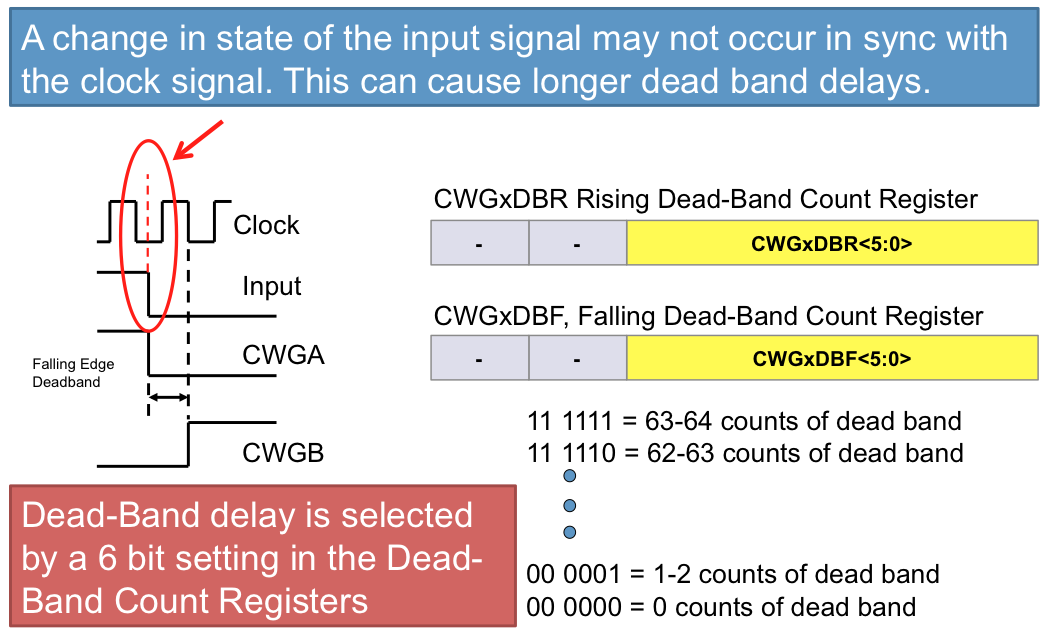Dead Band Control
Dead-band control provides for non-overlapping output signals, to prevent shoot-through current in power switches. The CWG contains two 6-bit dead-band counters (CWGxDBR and CWGxDBF registers). One dead-band counter is used for the rising edge of the input source control while the other is used for the falling edge of the input source control.
Dead-band is timed by counting CWG clock periods from zero up to the value in the rising or falling dead-band counter registers.

Rising Edge Control
The rising edge dead-band delays the turn-on of the CWGxA output from when the CWGxB output is turned off. The rising edge dead-band time starts when the rising edge of the input source signal goes true. When this happens, the CWGxB output is immediately turned off and the rising edge dead-band delay time starts. When the rising edge dead-band delay time is reached, the CWGxA output is turned on.
The CWGxDBR register sets the duration of the dead-band interval on the rising edge of the input source signal. This duration is from 0 to 64 counts of dead-band. Dead-band is always counted off the edge on the input source signal. A count of zero (0), indicates that no dead-band is present. If the input source signal is not present for enough time for the count to be completed, no output will be seen on the respective output.

Falling Edge Control
The falling edge dead-band delays the turn-on of the CWGxB output from when the CWGxA output is turned off. The falling edge dead-band time starts when the falling edge of the input source goes true. When this happens, the CWGxA output is immediately turned off and the falling edge dead-band delay time starts. When the falling edge dead-band delay time is reached, the CWGxB output is turned on.
The CWGxDBF register sets the duration of the dead-band interval on the falling edge of the input source signal. This duration is from 0 to 64 counts of dead-band. Dead-band is always counted off the edge on the input source signal. A count of zero (0), indicates that no dead-band is present. If the input source signal is not present for enough time for the count to be completed, no output will be seen on the respective output.

Dead-band Uncertainty
When the rising and falling edges of the input source trigger the dead-band counters, the input may be asynchronous to the clock input. This will create some uncertainty in the dead-band time delay. The maximum uncertainty is equal to one CWG clock period.

